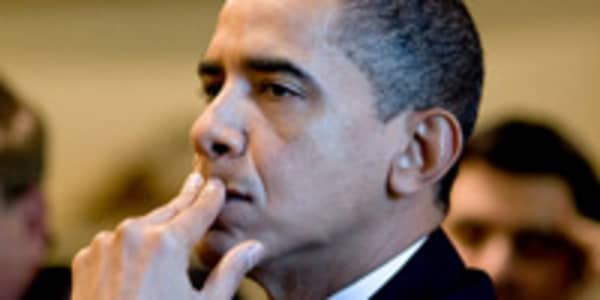The potential economic impact of a carbon market seems to divide American industry as much as talk about healthcare reform may divide a family at Sunday dinner.
Will it be a boon that brings new technologies, allowing more efficient use of energy and keeping the U.S. on the cutting edge, or will it be an onerous tax that will weigh down industry just as it climbs off the mat of a deep recession, jacking up costs for everyone and hurting job creation?
The answer may be both.
First, let’s understand how the carbon markets came about. While the U.S. debate about climate change seems to have heated up since Al Gore won a Nobel Prize and an Oscar for his eco-film "An Inconvenient Truth", the trigger was 1997’s Kyoto Protocol, whose goal was to reduce carbon emissions among all signatories—originally including all industrialized nations except the United States—to 5.2% of 1990 emissions levels by 2012.
“When ‘An Inconvenient Truth’ came out, (Americans) were wondering if climate change was real,” says Aimee Barnes, senior manager for US regulatory affairs at the carbon consulting firm EcoSecurities. “The positive thing is that we’ve moved from ‘whether’ to ‘how.’ Most Americans understand it’s real and now the question is how do we tackle that.”

Kyoto covered the six main “greenhouse gases” (GHG)—methane, nitrous oxide, hydrofluorocarbons, perfluorocarbons and sulfur hexafluoride—as well as carbon dioxide.
Since greenhouse gases vary in their environmental impact on a ton-by-ton comparative basis, a common measurement was needed, especially as some kind of allowance market was being discussed. Thus, emissions are now typically expressed as one metric ton of carbon dioxide equivalent (MtCO2e).
The biggest market for carbon emissions today is the European Union Emission Trading Scheme (EU ETS), launched in 2005 to provide a market for EU-member compliance with Kyoto.
The cap-and-trade model in Europe covers utilities and other large carbon emitters that make up about 50% of the total carbon emission of the EU. The scheme allowed participating industries to trade among themselves, or to work on projects in other nations that reduce GHG elsewhere in the world and give the “investor” industry the credits.
The cap-and-trade mechanism works by setting a limit on carbon emissions production for capped industries that usually decreases annually, then allows market participants to trade away any unused allowances to others who may need them. In the U.S., similar cap-and-trade markets were put in place years ago to reduce acid-rain-forming emissions with success, but the size of a potential carbon market dwarfs that initiative.
In the last few years, as state and local governments became more concerned with greenhouse gases, they sought to fill the vacuum left by Washington and formed regional emissions compliance markets.
The Regional Greenhouse Gas Initiative (RGGI) covers several northeastern states and eastern Canadian provinces. Formed in 2003, this cap-and-trade market specifically targets emissions from power plants larger than 25 MW. Its first carbon allowance auction took place in January 2009.
In the west, the Western Climate Initiative (WCI), spurred by California Governor Arnold Schwarzeneggar, includes several western US states, four Canadian provinces and four Mexican states. Formed in 2007, the organization plans to launch a cap-and-trade market in 2012.
A voluntary market also sprang up as companies sought ways to get ahead of legislation or to improve their corporate image. The Chicago Climate Exchange (CCX) began trading carbon credits in 2003, and counts Ford , DuPont ,IBM, American Electric Power and Motorola among its trading partners.
Since all industries won’t be covered under any of the mandatory cap-and-trade plans proposed so far for the US, exchange chairman Richard Sandor says you could continue to see the voluntary and mandatory markets grow in tandem.
“I think it depends on the details of any future mandated programs, but it’s certainly possible that there are roles for both,” he says. “You could continue to see demand for a market mechanism from industries that aren’t initially covered under a mandated program.
One presidential election later, and the landscape is set to change again.
President Obama campaigned on market solutions to carbon problems, longhand for cap-and-trade, and a newly invigorated Congress didn’t want to be left behind.
Among many similar initiatives, this bill would create a cap-and-trade market for industries like electric utilities, oil companies, large industrial firms, and other “covered entities”—described as something that emits the equivalent of 25,000 metric tons of carbon dioxide annually.
The market created by this bill would seek to supercede regional markets and take the next step of helping to create a market that could be stitched together with markets like the one in Europe.
Next Steps
Like the European model, the Markey-Waxman bill plans to grant this first round of carbon allowances, versus auctioning them. Granting should mean less of an immediate impact on the firms being capped, and hopefully fewer costs passed on to their clients.
President Obama sought to have allowances auctioned in his proposed budget for 2010, a move that would have brought in $78 billion in 2012 and as much as $83 billion in 2019.
Barnes says her firm is neutral as to how any US carbon scheme allocates carbon allowances, but the easiest path may be to blend auctioning and granting credits.
“We think neither all-auction or all-grants works,” she says. “But a hybrid of these (systems) would work.”
If the Markey-Waxman bill does pass this fall, the next step could be integrating a US carbon market with a potential broader global carbon market, spurred by a successor treaty to Kyoto.
The potential shape and scope of this market will be discussed at the COP15 summit — the annual climate change meeting attended by the world’s environment ministers — being held in in Copenhagen in early December. A lot has changed since Kyoto was first signed.
China has since passed the US to become the world’s largest carbon emitter, and other rapidly developing countries, like India, may have a harder time making a case for exemption from caps.
Other nations, like Australia, have explored creating their own national carbon market, similar to current US federal efforts.
Asked if he thought a single global carbon exchange could come out of these discussions, Sandor says the markets for other commodities may be a better template.
“I see global markets developing on what I call a ‘pluri-lateral’ basis,” he says. “I think we’ll see markets in different pockets of the world that are linked by similar contracts—much like you see with crude oil today or like we saw with cotton in the 19th century.”
(Editor's note: This is the first in a series of articles examining the business and technology of the carbon trade.)




